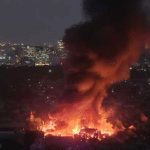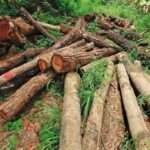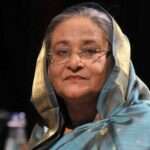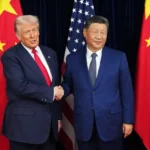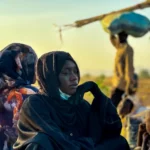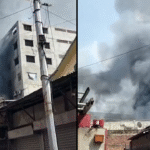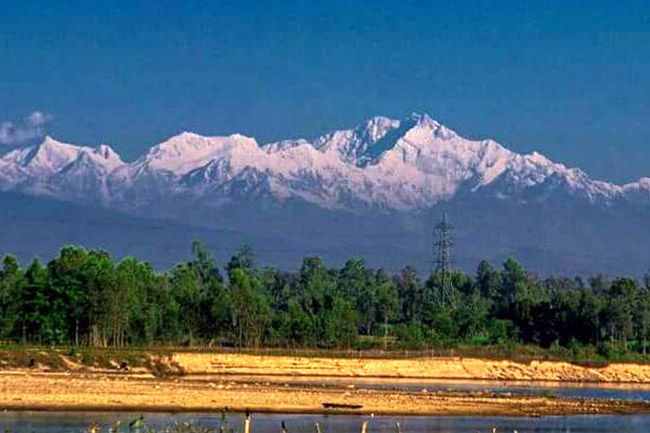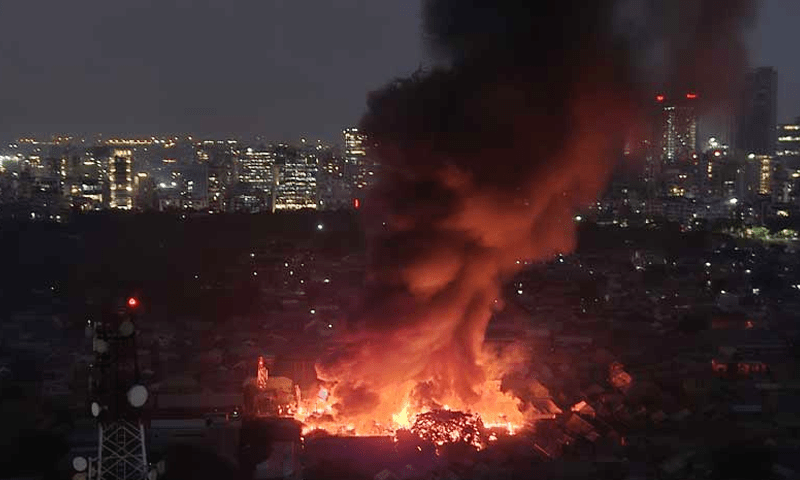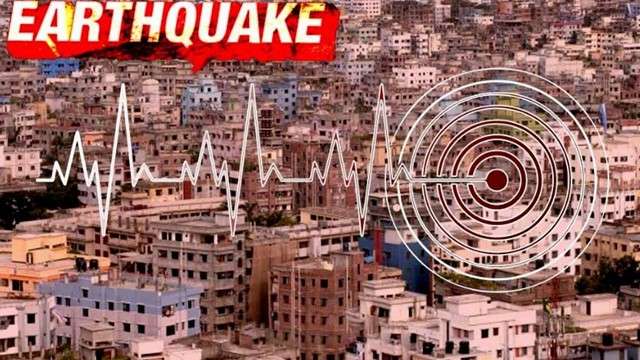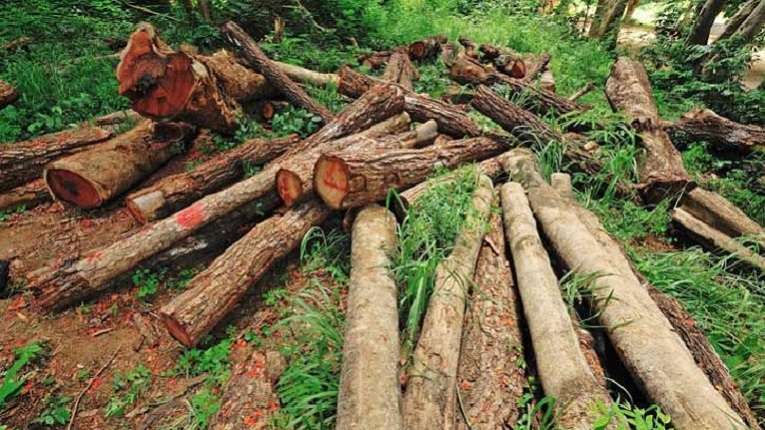Panchagarh District: A Gateway to the Himalayas-
Panchagarh District, located in the northernmost part of Bangladesh, is a unique region bordered by the majestic Himalayan foothills. Unlike most other districts in Bangladesh, Panchagarh shares a long border with India, making it a key strategic and geographical area. Known for its tea gardens, ancient history, scenic landscapes, and cool climate, Panchagarh District is an emerging tourist destination for travelers seeking tranquility and cultural richness.
Geography and Location-
Panchagarh District is part of the Rangpur Division and is bordered by India on three sides – the north, west, and east. The district spans an area of approximately 1,404 square kilometers and lies at the base of the Himalayas. This geographical location makes the climate of Panchagarh distinctively cooler than most parts of Bangladesh.
The district is surrounded by the Indian states of West Bengal and Bihar and shares international border check-posts at Banglabandha, one of the most significant trade points between Bangladesh and India.
History of Panchagarh-
The history of Panchagarh District dates back to ancient times. The name “Panchagarh” is derived from the five forts or “garh” that were believed to exist in the area: Bhitargarh, Hosaingarh, Mirgarh, Rajangarh, and Devengarh.
Historically, this region was under the rule of several ancient kingdoms and empires, including the Pala Dynasty, the Senas, and later the Mughals and British colonials. Panchagarh was originally part of the Jalpaiguri district during British rule. It became a thana in 1911 and was declared a district in 1984.
Administrative Structure-
The Panchagarh District consists of five upazilas:
- Panchagarh Sadar
- Tetulia
- Boda
- Debiganj
- Atwari
Each upazila contributes uniquely to the district’s culture, economy, and landscape. Tetulia, in particular, is notable for being situated at the northern tip of Bangladesh, adjacent to the Darjeeling region of India.
Economy and Agriculture-
Agriculture is the backbone of Panchagarh’s economy. The fertile soil and favorable climate support a wide range of crops including rice, wheat, maize, sugarcane, and various fruits and vegetables.
One of the most notable features of Panchagarh District is its tea industry. Panchagarh is home to several tea estates and small-scale tea gardens, contributing to Bangladesh’s tea production. Unlike the hilly tea gardens of Sylhet and Chittagong, the tea plantations in Panchagarh are on flat land, a unique characteristic.
The Banglabandha Land Port also plays a crucial role in boosting the economy through trade between Bangladesh, India, and even Nepal and Bhutan.
Culture and People-
The people of Panchagarh are known for their warmth, hospitality, and simplicity. The district has a rich cultural tradition with folk songs, dances, and festivals. Traditional Baul music, Jari, and Sari songs are still popular among the rural population.
Religious harmony is another significant feature of the district. Muslims, Hindus, Buddhists, and Christians live together peacefully, celebrating each other’s festivals such as Eid, Durga Puja, Buddha Purnima, and Christmas.
Places to Visit in Panchagarh-
1. Bhitargarh Fort City
One of the oldest archaeological sites in Bangladesh, the Bhitargarh Fort is believed to date back to the Gupta or Pala periods. Excavations have revealed fort walls, temples, and relics that hint at a once-thriving ancient city.
2. Banglabandha Zero Point
Banglabandha is a land port situated at the northwestern tip of Bangladesh. It is the closest point in Bangladesh to the Himalayas and provides access to Nepal through India. The scenic landscape and border view make it a must-visit location.
3. Tetulia Tea Gardens
The tea gardens in Tetulia provide a breathtaking sight. Tourists often visit the Kazi & Kazi Tea Estate, which produces organic tea for both local and international markets.
4. Maharaja Dighi
Located in Debiganj Upazila, Maharaja Dighi is a large historical pond with a palace ruin beside it. The area is ideal for a relaxing picnic or historical exploration.
5. Mirzapur Shahi Mosque
A stunning example of Mughal architecture, this mosque is located in Atwari Upazila and dates back several centuries. It remains a place of religious significance and historical interest.
Climate and Weather-
The climate of Panchagarh District is influenced by its proximity to the Himalayas. It experiences a subtropical climate with distinct seasons. Winters (December–February) are cooler, often dropping below 10°C, while summers are moderate with occasional rainfall.
Because of this, Panchagarh is one of the few districts in Bangladesh that offers a relatively cool and refreshing environment, especially during winter.
Transportation and Connectivity-
Panchagarh District is well connected by road and rail. The Dhaka–Panchagarh route is served by direct buses and trains, including the popular “Panchagarh Express” which takes about 10 hours from the capital.
Roads within the district are mostly paved and accessible, with frequent local transport such as auto-rickshaws and buses connecting the upazilas and tourist spots.
Education and Institutions-
Panchagarh has several educational institutions, including:
- Panchagarh Government College
- Debiganj Degree College
- Panchagarh Government Women’s College
- Technical and vocational training centers
The literacy rate of the district is steadily improving, and the government continues to invest in educational infrastructure.
Best Time to Visit Panchagarh District-
The best time to visit Panchagarh District is from November to February, during the winter season. The cool climate, clear skies, and refreshing breeze make it ideal for sightseeing and tea garden tours. This period also coincides with local festivals and the blooming tea gardens, providing a culturally immersive experience.
Conclusion-
Panchagarh District is a gem of the north, often overlooked in the mainstream tourism circuit. With its serene tea gardens, ancient archaeological sites, strategic location near the Himalayas, and harmonious cultural blend, Panchagarh offers something for every traveler. Whether you’re an explorer, a history buff, a nature lover, or a cultural enthusiast, this district is bound to leave you enchanted.
Frequently Asked Questions (FAQs)-
Q: Where is Panchagarh District located?
A: Panchagarh District is located in the northernmost part of Bangladesh, bordered by India on three sides.
Q: What is Panchagarh famous for?
A: Panchagarh is famous for its tea gardens, cool climate, ancient archaeological sites like Bhitargarh, and scenic beauty near the Himalayas.
Q: How can I reach Panchagarh from Dhaka?
A: You can reach Panchagarh from Dhaka by direct train (Panchagarh Express) or by bus. The journey takes about 10-12 hours.
Q: Is Panchagarh a good tourist destination?
A: Yes, it’s an emerging tourist destination with unique features such as flatland tea gardens, ancient forts, and border tourism at Banglabandha.
Q: What is the best time to visit Panchagarh?
A: The best time to visit Panchagarh is during the winter season, from November to February.
Q: What are the major upazilas in Panchagarh?
A: The five upazilas in Panchagarh are Panchagarh Sadar, Tetulia, Boda, Debiganj, and Atwari.
Q: Are there any good hotels in Panchagarh?
A: Yes, there are several budget and mid-range hotels and guest houses in Panchagarh Sadar and Tetulia suitable for tourists.
Q: Does Panchagarh have any historical sites?
A: Yes, Bhitargarh Fort and Mirzapur Shahi Mosque are among the notable historical sites in the district.


